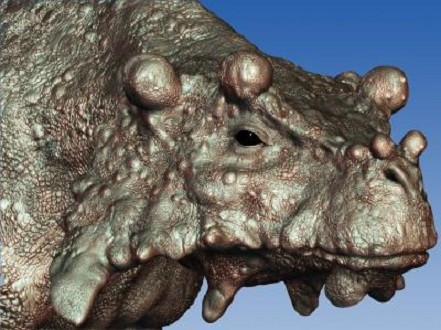
A cow-sized, plant-eating reptile roamed the Earth around 260 million years ago, according to international researchers.
The ugly creature known as a pareiasaur belonged to the genus Bunostegos, which means "knobby [skull] roof." They sported the largest, most bulbous bony knobs that were probably similar to skin-covered horns found in modern animals.
Pareiasaurs are large, herbivorous animals that lived during the Middle and Late Permian period, about 266-252 million years, ago even before dinosaurs roamed the Earth. During this period, the Earth's present continents were all joined together as one supercontinent called "Pangea", which was formed about 300 million years ago.
A team of international researchers have found Bunostegos fossils near the equator in what is now northern Niger. "Imagine a cow-sized, plant-eating reptile with a knobby skull and bony armor down its back," lead author Linda Tsuji, from the University of Washington, said in a statement.
Tsuji and her colleagues found evidence suggesting that the Bunostegos belonged to a group of animals that were living in an isolated desert during the Permian period. This also adds evidence to the idea that a vast desert was located in the middle of Pangea with a fauna on its own.
According to the researchers, the climatic conditions that prevailed during the Permian era constrained the Bunostegos along with other animals, reptiles and amphibians to the central area of the supercontinent.
"Our work supports the theory that central Pangea was climatically isolated, allowing a unique relict fauna to persist into the Late Permian,"said Christian Sidor, another author of the paper.
Using geological data, researchers found that the central Pangea was extremely dry that restricted the ancient creatures from venturing out. They believe that the long period of isolation led the Bunostegos to evolve its unique structural features over millions of years.
Like most of the animals from the Permian period, the Bunostegos also perished in a mass extinction that occurred some 248 million years ago. It is not clear as to what caused the extinction event, reported Los Angeles Times.
Researchers insist that more study need to be carried out on the Permian fossil record to get a clear understanding about the Permian era as well as the mass extinction that ended it.
The details of the findings are published in the Journal of Vertebrate Paleontology.

















